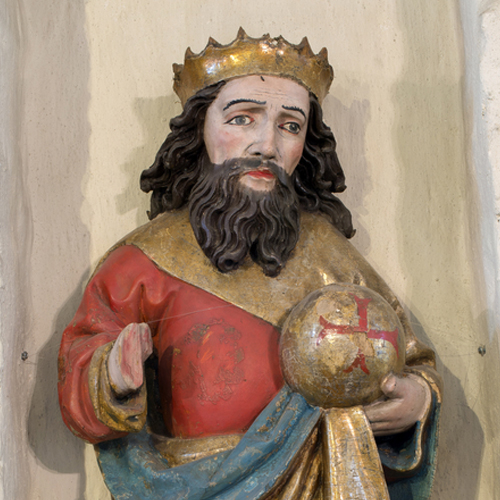
July 29
Olaf II Haraldsson was King of Norway from 1015 to 1028. After his death, he was given the title Perpetual King of Norway. He was killed in the Battle of Stiklestad on July 29, 1030. He was only 35 years old, and his holiness wasn’t recognized until after his death.
During his life, Olaf aimed to unite Norway into one kingdom. One winter, while he was staying with Duke Richard II of Normandy (France), Olaf was baptized at Rouen. And when he returned to Norway, he declared himself king. Eventually, he won more power than any of his predecessors. However, the Norwegian nobles were not happy about this and drove Olaf into exile. Olaf was killed in the Battle of Stiklestad as he tried to retake the capital of Norway. He was buried at Nidaros, and a small wooden church was built over his burial site. Eventually, this church became Nidaros Cathedral. Nidaros Cathedral is now considered Norway’s national shrine. From its origin in 1030 until 1537, the cathedral was a Catholic church; it is now a Church of Norway (Lutheran) church. Olaf has traditionally been credited for bringing Christianity to Norway. He made Christianity the legal religion of Norway, and codified Norwegian Church law. Saint Olaf was adopted as a patron saint by the people of Norway and the Faroe Islands, as well as by the people of Normandy, France. At the time of Saint Olaf, there were many exchanges between Normandy and the Scandinavian countries. One of the flags of Normandy bears a Scandinavian cross, the Cross of Saint Olaf, which recalls the Scandinavian origins of Normandy.
(Image © The Visual Explorer, via Shutterstock)